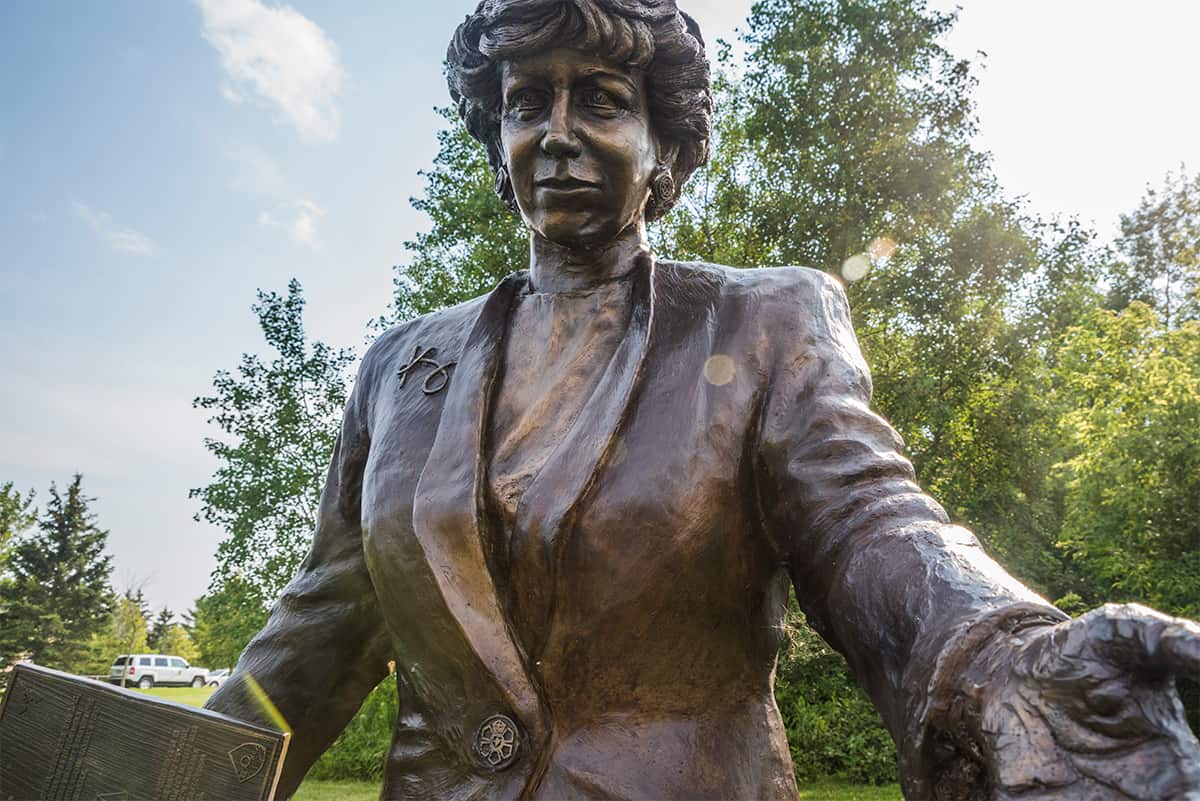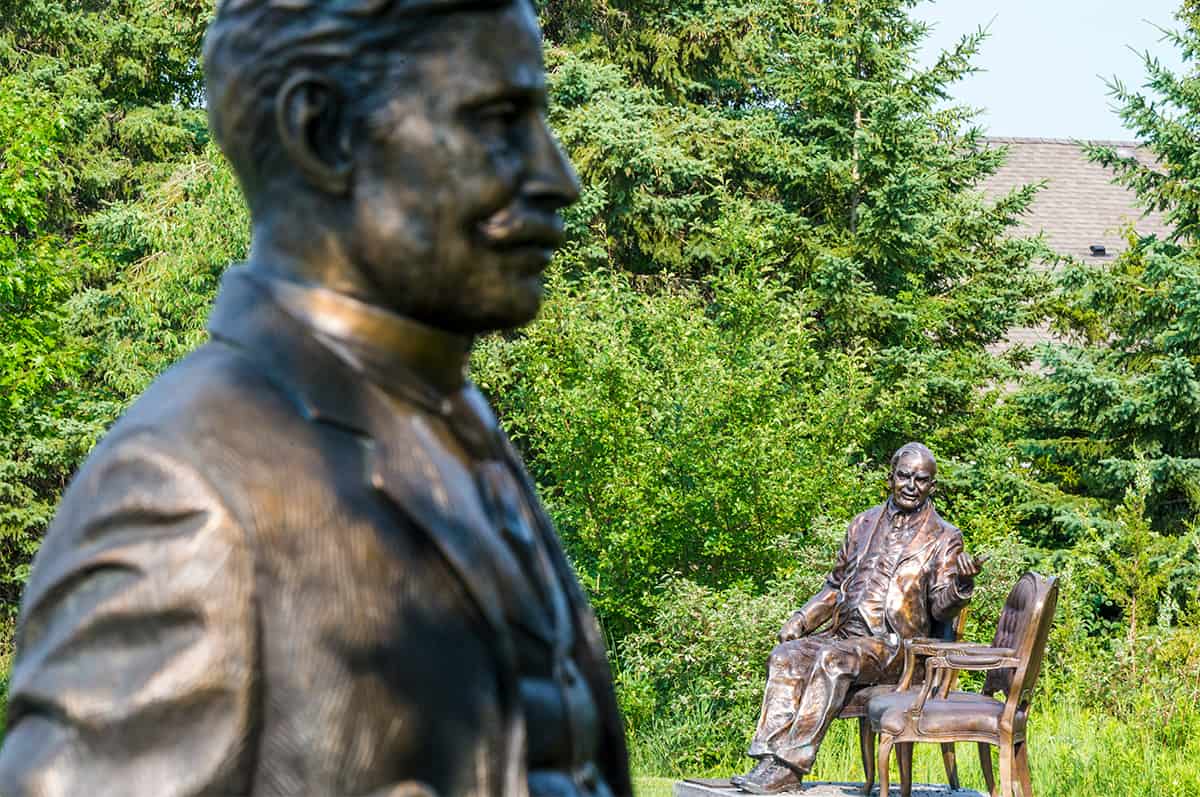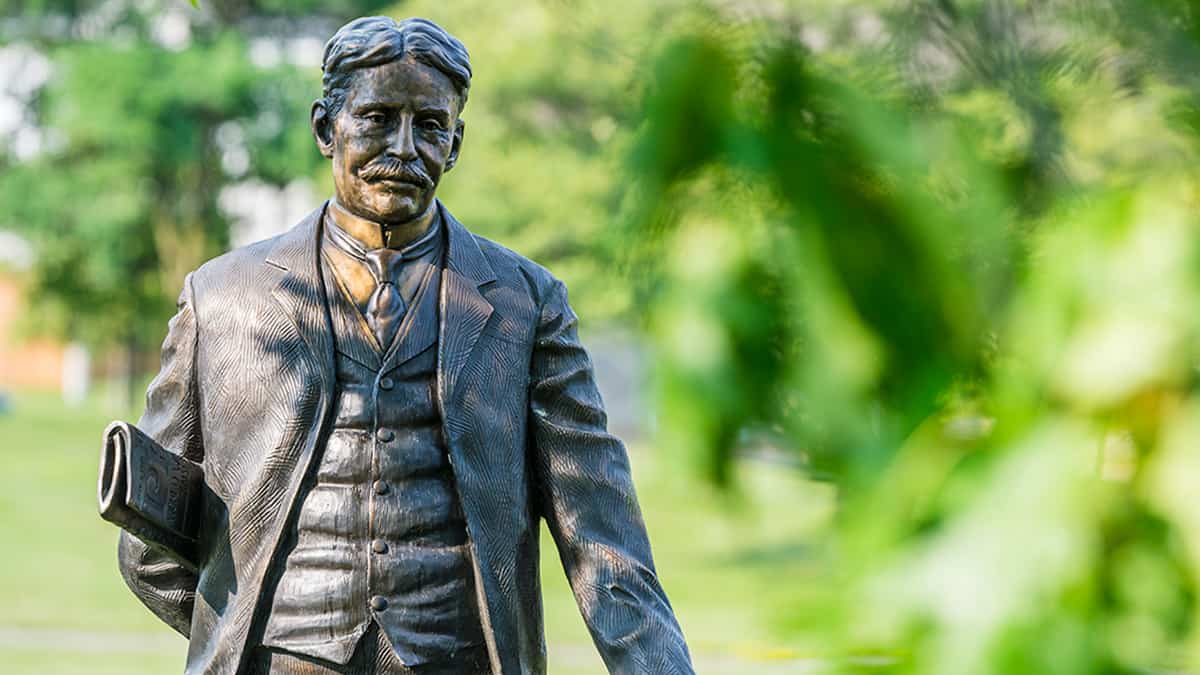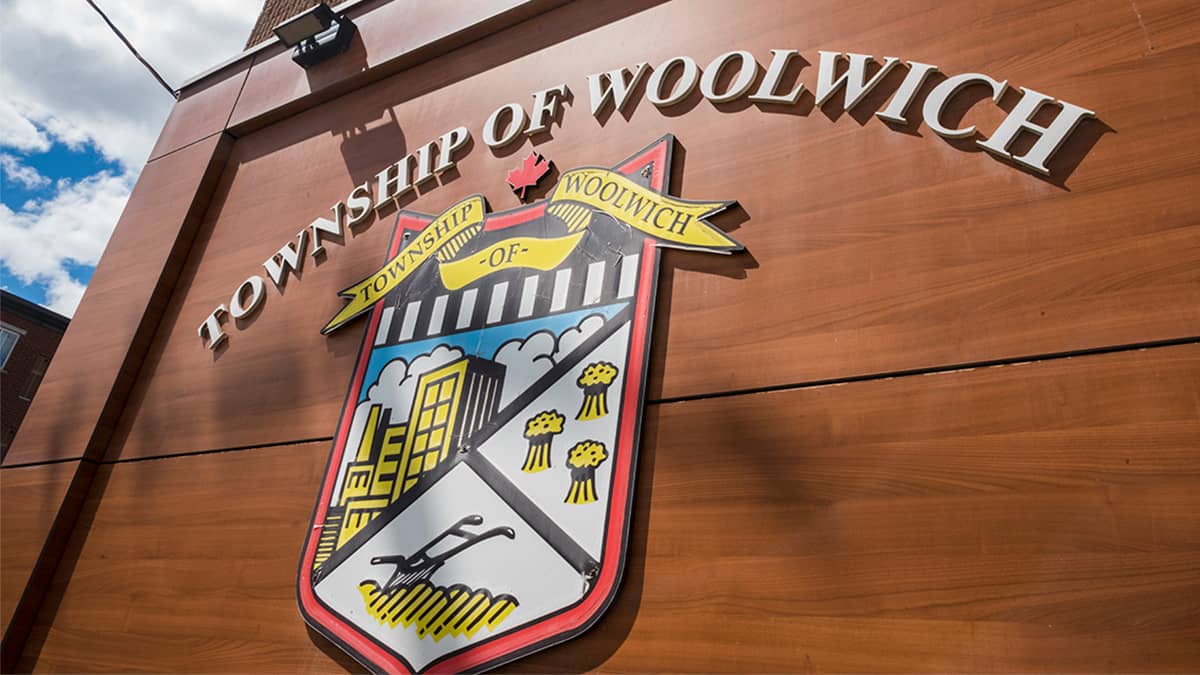A controversial plan to celebrate Canada’s past prime ministers with a series of statues arranged along a walking path has been shelved following a WilmotTownship council vote this week.
The existing statues on display at Castle Kilbride – John A. Macdonald, Robert Borden, William Lyon Mackenzie King, Lester B. Pearson and Kim Campbell – have been put into storage as of Wednesday.

The decision follows recommendations from a community consultation process led by an Indigenous advisory group, First Peoples Group.
“Based on what we have heard, First Peoples Group advises the Township of Wilmot council to consider immediately removing existing statues related to the Prime Ministers Path and to discontinue any future expansion or investment in the Prime Ministers Path as it exists today,” the group said in its advice to council.
The PM path has been a divisive issue in Wilmot Township since its inception in 2016, with some in the community advocating for the removal of the statues saying that their presence turns a blind eye to the trauma done to the Indigenous community by past Canadian governments. Others have voiced opposition to the removal, stating that the statues can serve as an educational tool to better understand Canada and its history.
During his delegation to council Monday night, Wilmot resident Dave Atkinson noted that in the Truth and Reconciliation Commission of Canada’s Calls to Action they advocate the integration of “Indigenous history, heritage values, and memory practices into Canada’s national heritage and history.
“I would like to conclude with the words of Murray Sinclair, who served as chairman of the Truth and Reconciliation Commission from 2009 to 2015, ‘The problem I have with the overall approach to tearing down statues and buildings is that it is counterproductive to… reconciliation because it almost smacks of revenge or smacks of acts of anger, but in reality, what we are trying to do is… create more balance in the relationship.’” concluded Atkinson.
In contrast to Atkinson’s position, resident Nigel Gordijk explained in his delegation to council how impactful these life-like statues are to those who view them.
“We’ve heard from Indigenous people who have said that seeing these statues, particularly the one of Sir John A. Macdonald, causes them distress because the statues celebrate leaders who’ve harmed their communities,” said Gordijk.
Resident Olivia Miller also voiced her concern about the statues and their propensity to prolong the hurt and injustices of past actions done by those prime ministers depicted.
“This project must be abandoned to end our prolonged role in harming the Indigenous communities within our stolen land. I’m not saying that we can’t revisit and significantly adjust this idea in the future, I’m just saying that we can’t move past the hurt until we stop causing it,” said Miller.
The events taking place in Wilmot Township are a microcosm of the social mindfulness taking place in the rest of the country and even the world. As marginalized communities gain stronger voices and the knowledge of the injustices done to them becomes more widespread, so do the calls for inclusivity and social equity, the township heard. It’s a message that’s been amplified with recent discoveries of bodies buried at former residential schools in BC and Saskatchewan.
“It is very disheartening to see that divide amongst the people, the people that I love so much,” said Wilmot Township Mayor Les Armstrong during the meeting. “I too hope that we can get to a point where everybody is considered the same… It doesn’t matter what we look like, we’re all human beings.”










